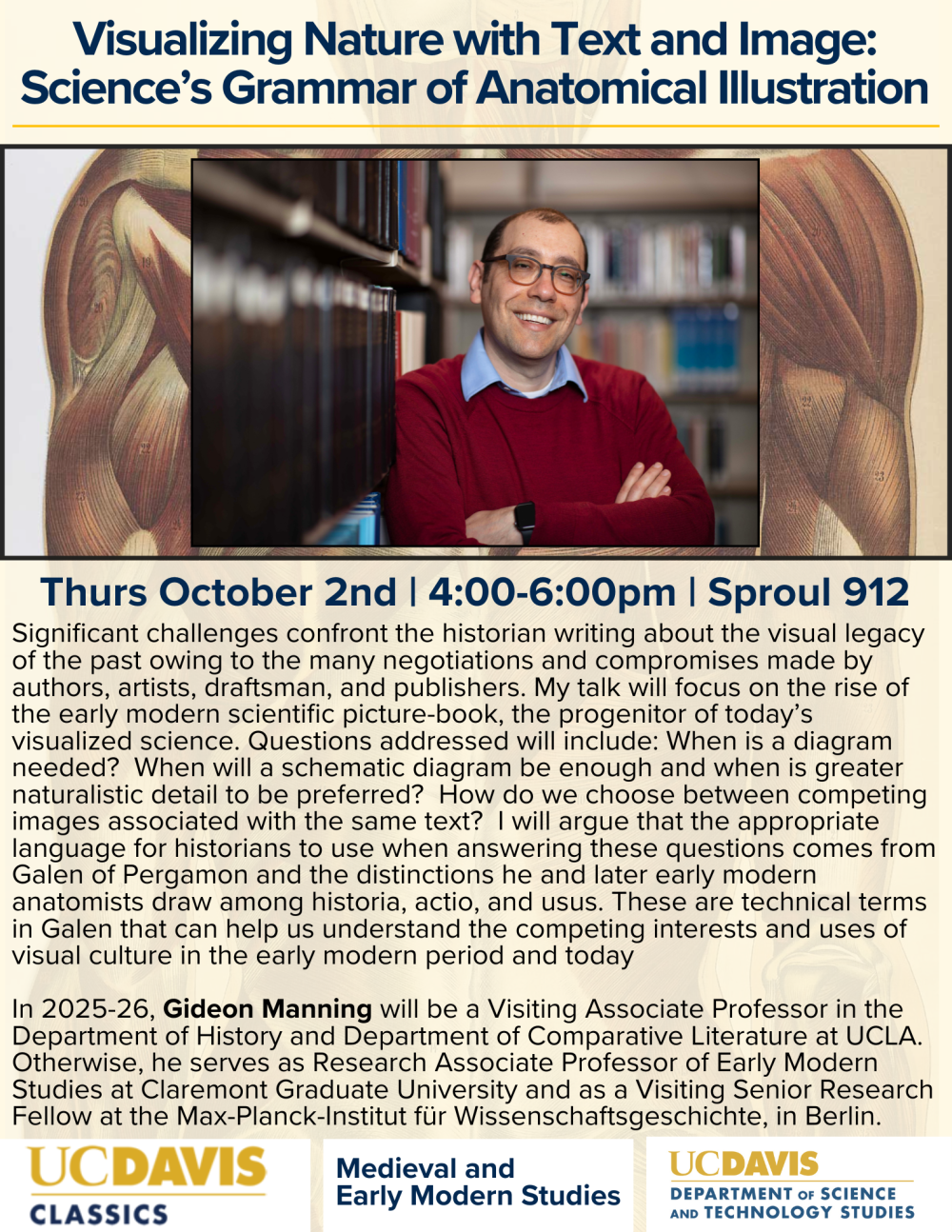
Event Date
Significant challenges confront the historian writing about the visual legacy of the past owing to the many negotiations and compromises made by authors, artists, draftsman, and publishers. My talk will focus on the rise of the early modern scientific picture-book, the progenitor of today’s visualized science. Questions addressed will include: When is a diagram needed? When will a schematic diagram be enough and when is greater naturalistic detail to be preferred? How do we choose between competing images associated with the same text? I will argue that the appropriate language for historians to use when answering these questions comes from Galen of Pergamon and the distinctions he and later early modern anatomists draw among historia, actio, and usus. These are technical terms in Galen that can help us understand the competing interests and uses of visual culture in the early modern period. My primary case study will be René Descartes’s Treatise on Man (1662/1664) and the “mechanical" depiction of the living body to be found there. I will explore the original message of Descartes’s images of the human body and its parts, their function in his work, the intention of their creators, who in the case of the Treatise on Man were Descartes’s editors, and the subsequent reception of the “mechanical representation of the living body."
In 2025-26, Gideon Manning will be a Visiting Associate Professor in the Department of History and Department of Comparative Literature at UCLA. Otherwise, he serves as Research Associate Professor of Early Modern Studies at Claremont Graduate University and as a Visiting Senior Research Fellow at the Max-Planck-Institut für Wissenschaftsgeschichte, in Berlin. He is a past recipient of a "New Directions Fellowship" from the Mellon Foundation, which he used to attended medical school at Keck UCS, and it currently at work on several projects, including one involving the history of death, another celebrating the 400th anniversary of the demonstration of the circulation of the blood, and a third related to pictorial knowledge and visualization in science, of which his UC Davis talk is a part.

